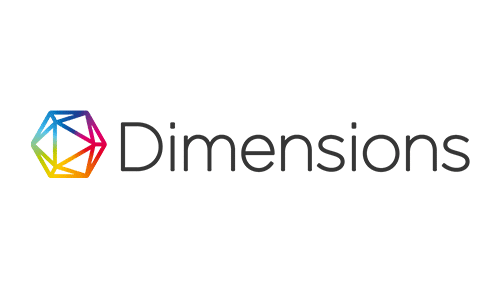THE EFFECT OF NANOPARTICLE STANDARDIZED EXTRACTS OF BAY LEAVES (Syzygium polyanthum (Wight) Walp.) IN LOWERING BLOOD GLUCOSE LEVELS OF WHITE RATS (Rattus norvegicus)
DOI:
https://doi.org/10.52434/jfb.v14i1.1980Keywords:
Blood glucose levels, ethanolic extract, in vivo Syzygium polyanthum (Wight) Walp., nanoparticleAbstract
Several studies revealed that Syzygium polyanthum (Wight) Walp, known as bay leaves, has the potential to be used as herbal medicine due to its active compounds including flavonoids. Herbal medicines are chosen to replace synthetic drugs which have side effects on health. However, some active substances of herbal medicines including bay leaves are less soluble in water and have low bioavailability to be absorbed by the intestine is low. A formulation into nanoparticles will provide more effective results. This study aimed to develop a standardized herbal medicine from the bay leaves extract in nanoparticle form with fine quality and efficacious in lowering blood glucose levels. The nanoparticle formulation was conducted using the ionic gelation method with chitosan- tripolyphosphate base and was designed into pre- and post-test-controlled group designs. Wistar white rats (Rattus norvegicus) were used as the experimental animal and grouped into a negative control group, normal control group, positive control (Glibenclamide) groups, and test dosages-induced control group. Fasting blood glucose levels were measured using an enzymatic glucometer and the AUC was analyzed based on the trapezoidal formula statistically using the Kruskal-Wallis and Mann-Whitney tests. The results showed that the bay leaves contained secondary metabolite including flavonoid with concentrations at 96%, 70%, 50%, respectively. The nanoparticles sizes were 1.48%; 1.62%; 1.50%; and 0.03%, respectively. The average particle size was 549.2 nm, and the zeta potential was -40.2 mV. Nanoparticle administration at a dose of 426.80 mg/kg BW; 213.40 mg/kg BW; and 106.70 mg/kg BW showed decreasing blood glucose levels when compared to the positive control group but not significant (P>0.005). The smallest dose of nanoparticle extract that lowered blood glucose levels was at a dose of 106.70 mg/kg BW. It can be concluded the nanoparticles form of bay leaves extract can lower blood glucose levels and meets the quality requirements.
References
International Diabetes Federation (IDF). IDF diabetes atlas ninth edition 2019. 19th ed. International Diabetes Federation; 2019.
Badan Pengawas Obat dan Makanan Republik Indonesia. Formularium ramuan etnomedisin obat asli Indonesia [Internet]. III. Jakarta: Badan Pengawas Obat dan Makanan; 2013. 1–113 p. Available from: http://journal.um-surabaya.ac.id/index.php/JKM/article/view/2203
Kementerian Kesehatan Republik Indonesia. Formularium obat herbal asli Indonesia. Jakarta: Kementerian Kesehatan Republik Indonesia; 2017. 100–101 p.
Zanaria R, Kamaluddin M, Theodorus T. Efektivitas ekstrak etanol daun salam (Eugenia polyantha) terhadap GLUT 4 di jaringan adiposa dan kadar gula darah puasa pada tikus putih jantan. Biomed J Indones. 2019;3(3):145–53.
Ridwan A, Astrian RT, Barlian A. Pengukuran efek antidiabetes polifenol (Polyphenon 60) berdasarkan kadar glukosa darah dan histologi pankreas mencit (Mus musculus L.) SW jantan yang Dikondisikan Diabetes Mellitus. J Mat dan Sains. 2012;17(2):78–82.
Smith AJ, Kavuru P, Wojtas L, Zaworotko MJ, Shytle RD. Cocrystals of quercetin with improved solubility and oral bioavailability. Mol Pharm. 2011;8(5):1867–76.
Masitoh A, Sopyan I. Formulasi nanopartikel tanaman herbal untuk terapi kanker. Maj Farmasetika. 2019;4(5):165–72.
Silalahi J. Penapisan fitokimia dan formulasi tablet dari nanopartikel ekstrak daun pulai (Alstonia scholaris (L). R. BR) serta uji aktivitas penghambatan enzim α-glukosidase secara in-vitro. Universitas Pancasila; 2015.
Brylianto A. Uji aktivitas antidiabetes ekstrak etanol 96% dan nanopartikel ekstrak rimpang temulawak (Curcuma xanthorriza Roxb.) secara in vivo. Universitas Pancasila; 2018.
Husa F, Mita SR. Identifikasi bahan kimia obat dalam obat tradisional stamina pria dengan metode kromatografi lapis tipis. Farmaka [Internet]. 2020;18(2):16–25. Available from: https://jurnal.unpad.ac.id/farmaka/article/view/25955
Arryanto Y. IPTEK nano di Indonesia: terobosan, peluang dan strategi. Jakarta: Deputi Bidang Perkembangan Ristek Iptek, Kementerian Negara Riset dan Teknologi; 2007. 1–206 p.
Vaughn JM WR. Nanoparticle engineering. In: Swarbrick J, editor. Encyclopedia of Pharmaceutical Technology. 3rd ed. New York: Nova Science Publisher; 2007. p. 48.
Murdock RC, Braydich-Stolle L, Schrand AM, Schlager JJ, Hussain SM. Characterization of nanomaterial dispersion in solution prior to in vitro exposure using dynamic light scattering technique. Toxicol Sci. 2008;101(2):239–53.
NanoComposix. Nanocomposix’s guide to dynamic light scattering measurement and analysis. NanoComposix. 2012;1(3):1–7.
Harris R, Lecumberri E, Mateos-Aparicio I, MengÃbar M, Heras A. Chitosan nanoparticles and microspheres for the encapsulation of natural antioxidants extracted from Ilex paraguariensis. Carbohydr Polym. 2011;84(2):803–6.
Deladino L, Anbinder PS, Navarro AS, Martino MN. Encapsulation of natural antioxidants extracted from Ilex paraguariensis. Carbohydr Polym. 2008;71(1):126–34.
Dewandari KT, Yuliani S, Yasni S. Ekstraksi dan karakterisasi nanopartikel ekstrak sirih merah (Piper crocatum). J Penelit Pascapanen Pertan. 2013;10(2):58–65.
Si M mei, Lou J shu, Zhou CX, Shen JN, Wu HH, Yang B, et al. Insulin releasing and alpha-glucosidase inhibitory activity of ethyl acetate fraction of Acorus calamus in vitro and in vivo. J Ethnopharmacol. 2010;128(1):154–9.
Mikušová V, Mikuš P. Advances in chitosan-based nanoparticles for drug delivery. Int J Mol Sci. 2021;22(17):1–93.
Pathomthongtaweechai N, Muanprasat C. Potential applications of chitosan-based nanomaterials to surpass the gastrointestinal physiological obstacles and enhance the intestinal drug absorption. Pharmaceutics. 2021;13(6):1–22.
Downloads
Additional Files
Published
Issue
Section
License
or all articles published in Jurnal Ilmiah Farmako Bahari, the copyright is retained by the journal. Articles are published under the terms of Creative Commons Attribution-ShareAlike 4.0 International License (CC-BY-SA 4.0) . For Authors:
|


1.png) Download Journal Template
Download Journal Template
.png)









